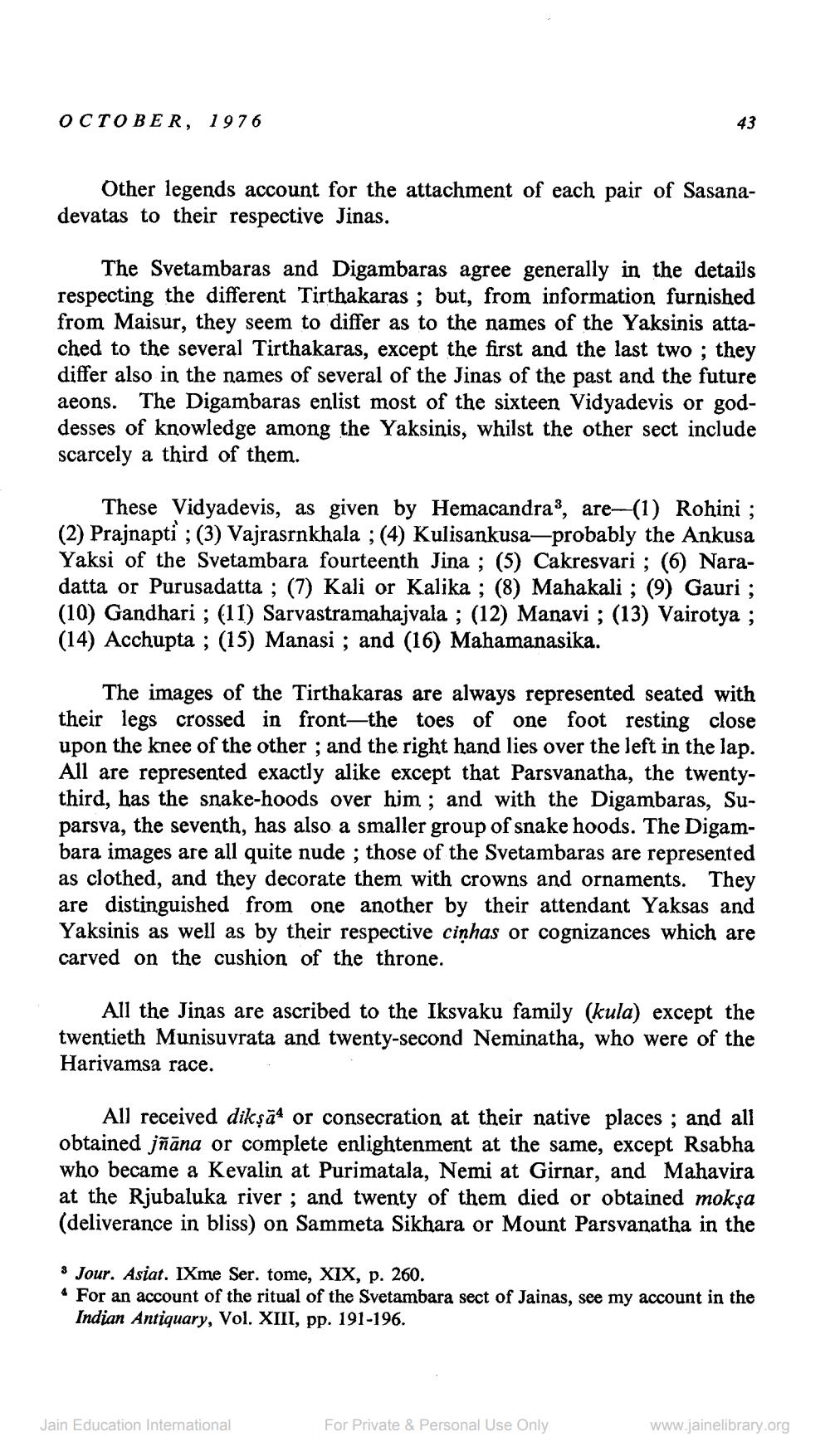Book Title: Jain Journal 1976 10 Author(s): Jain Bhawan Publication Publisher: Jain Bhawan Publication View full book textPage 5
________________ OCTOBER, 1976 Other legends account for the attachment of each pair of Sasanadevatas to their respective Jinas. The Svetambaras and Digambaras agree generally in the details respecting the different Tirthakaras; but, from information furnished from Maisur, they seem to differ as to the names of the Yaksinis attached to the several Tirthakaras, except the first and the last two ; they differ also in the names of several of the Jinas of the past and the future aeons. The Digambaras enlist most of the sixteen Vidyadevis or goddesses of knowledge among the Yaksinis, whilst the other sect include scarcely a third of them. These Vidyadevis, as given by Hemacandra', are-(1) Rohini ; (2) Prajnapti ; (3) Vajrasrnkhala ;(4) Kulisankusa-probably the Ankusa Yaksi of the Svetambara fourteenth Jina ; (5) Cakresvari ; (6) Naradatta or Purusadatta ; (7) Kali or Kalika ; (8) Mahakali ; (9) Gauri ; (10) Gandhari ; (11) Sarvastramahajvala ; (12) Manavi ; (13) Vairotya ; (14) Acchupta ; (15) Manasi ; and (16) Mahamanasika. The images of the Tirthakaras are always represented seated with their legs crossed in front—the toes of one foot resting close upon the knee of the other; and the right hand lies over the left in the lap. All are represented exactly alike except that Parsvanatha, the twentythird, has the snake-hoods over him; and with the Digambaras, Suparsva, the seventh, has also a smaller group of snake hoods. The Digambara images are all quite nude ; those of the Svetambaras are represented as clothed, and they decorate them with crowns and ornaments. They are distinguished from one another by their attendant Yaksas and Yaksinis as well as by their respective cinhas or cognizances which are carved on the cushion of the throne. All the Jinas are ascribed to the Iksvaku family (kula) except the twentieth Munisuvrata and twenty-second Neminatha, who were of the Harivamsa race. All received dikşā4 or consecration at their native places ; and all obtained jñāna or complete enlightenment at the same, except Rsabha who became a Kevalin at Purimatala, Nemi at Girnar, and Mahavira at the Rjubaluka river; and twenty of them died or obtained mokşa (deliverance in bliss) on Sammeta Sikhara or Mount Parsvanatha in the 3 Jour. Asiat. IXme Ser. tome, XIX, p. 260. - For an account of the ritual of the Svetambara sect of Jainas, see my account in the Indian Antiquary, Vol. XIII, pp. 191-196. Jain Education International For Private & Personal Use Only www.jainelibrary.orgPage Navigation
1 ... 3 4 5 6 7 8 9 10 11 12 13 14 15 16 17 18 19 20 21 22 23 24 25 26 27 28 29 30 31 32 33 34 35 36 37 38 39 40 41 42 43 44
